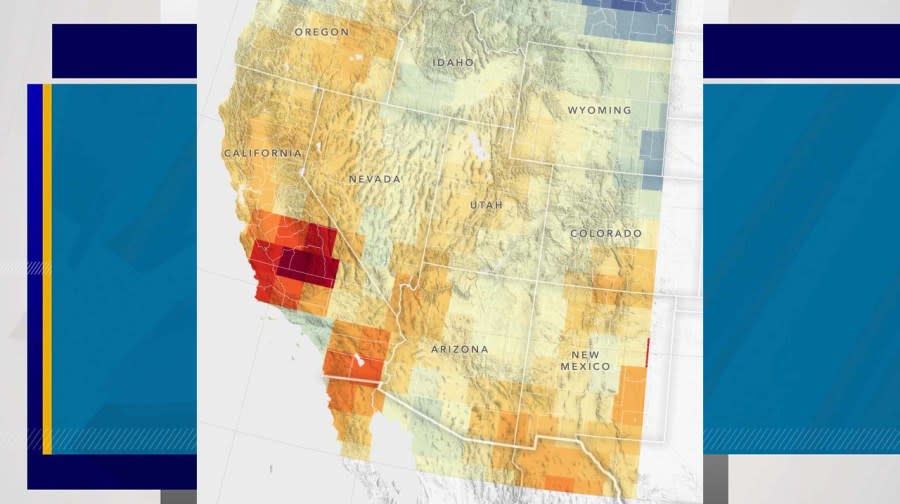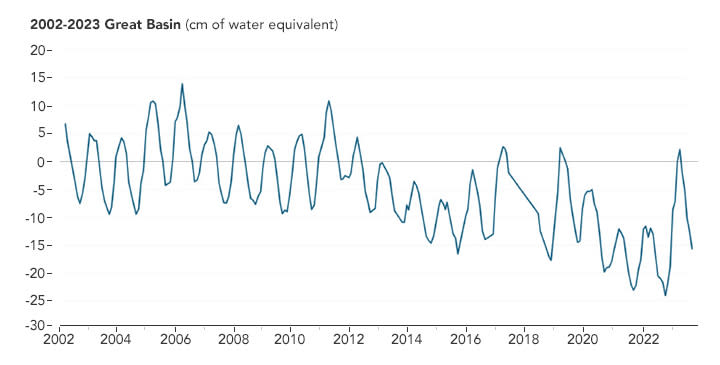Satellite-derived images show groundwater depletion

LAS VEGAS (KLAS) — Groundwater in parts of Southern California has dropped dramatically since 2012, a symptom of the drought that has received far less attention than Lake Mead.
An image and a graph released Tuesday by NASA’s Earth Observatory shows “satellite-derived data” documenting the decline of groundwater. The images illustrate 20 years of data from the GRACE (Gravity Recovery and Climate Experiment) and GRACE-FO satellites.
Scientists say the groundwater decline in the Great Basin far exceeds surface water losses. Over about the past two decades, the underground water supply in the Great Basin has fallen dramatically, according to NASA’s Earth Science News Team in an article published on June 17.
Lake Mead’s 2-year outlook: A 5-foot drop, then what?
The Great Basin includes most of Nevada and large parts of California, Utah and Oregon. The region is called a basin because water does not drain to the ocean — the water sinks into the ground and is stored in aquifers.

The map (above) shows changes in stored water between April 2002 and September 2023.
“Notice that some of the largest rates of loss (red) occurred across parts of Southern California, which has been severely affected by water declines in the Great Basin region,” the article said.
California’s Imperial Valley, which relies on Colorado River water, is in the southernmost region of California on the map. The area in the darkest red is California’s Central Valley, prime agricultural land from Fresno to Bakersfield.
Maps of fluctuating water levels have improved recently as researchers have learned to parse more and finer details from the dataset.
“Declining water levels in the Great Salt Lake and Lake Mead have been testaments to a megadrought afflicting western North America since 2000. But surface water only accounts for a fraction of the Great Basin watershed,” the article reported.
“Far more of the region’s water is underground. That has historically made it difficult to track the impact of droughts on the overall water content of the Great Basin,” according to the article.

University of Maryland Earth scientist Dorothy Hall said an occasional snowy winter isn’t enough to offset the downward trend in groundwater.
“In years like the 2022–23 winter, I expected that the record amount of snowfall would really help to replenish the groundwater supply,” Hall said in a paper published in March. “But overall, the decline continued.”
Two major factors: Population growth, and water diversion for agriculture and urban development.
Populations in the states that rely on Great Basin water supplies have grown by 6% to 18% since 2010, according to Census Bureau data.
Copyright 2024 Nexstar Media, Inc. All rights reserved. This material may not be published, broadcast, rewritten, or redistributed.
For the latest news, weather, sports, and streaming video, head to KLAS.

